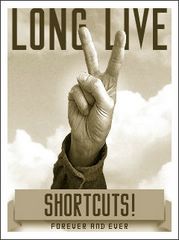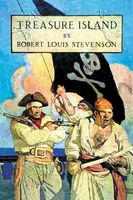
There's an interesting interview with Annie Proulx online:
At Close Range with Annie Proulx: Pulitzer Prize-winning Writer Shares Insights in Short Story, Film Adaptation of "Brokeback Mountain," by Matthew Testa, writing for
Planet Jackson Hole.
Annie Proulx (pronounced
Proo), the award-winning author of
The Shipping News, is in the headlines for writing the short story "Brokeback Mountain," which has been turned into a
highly praised yet controversial movie. The story "Brokeback Mountain" first showed up in the
The New Yorker in 1997 [
New Yorker 13 Oct. 97: 74 (11 pp)] and, later, in Proulx's anthology of Wyoming stories called
Close Range.
"No, it is not difficult to move around Wyoming anonymously. Women of a certain age are invisible. And most Wyoming people don't give a damn whether you write novels or knit mittens." --Annie Proulx
"Brokeback Mountain" explores the pain of discovering love, losing it, and enduring the consequences. What makes the story different is that its lovers are two ranch kids--both male--who grow into lives where they have to hide their love for each other. Their problem has seismic effects on everyone in their adult lives.
A recent
story in the Casper Star-Tribune sampled a variety of responses to the movie. One response came from another Wyoming writer: "Kaycee playwright Sandy Dixon doesn't care to open her mind to the story line of 'Brokeback Mountain,' she said. A lifelong Wyomingite, Dixon said she has never encountered a gay cowboy, and doesn't think it's right for Proulx and Hollywood to portray Wyoming as a state with gay cowboys."
In contrast, an article in Salon.com reported,"Curtis Monk, who leads an AIDS-awareness program and also coordinates events for Wyoming Equality, tends to disagree. 'I alone personally know 15 gay cowboys who come to our dances'" (
All Quiet on the Western Gay Front).
nHumanities doesn't think of the movie as a
cowboy movie--after all, these guys were herding sheep when they met. Nor do we think of it as a
gay movie--it's about the need for love, and love crosses a lot of boundaries.
That appears to be the way director Ang Lee and Focus Films think of it, too.
Lee says the movie is "not a Western. No gunslingers. I don't want to undermine the sanctified image of the American Western man. It's a love story of real people in the West." When
James Schamus, co-president of Focus Films, was working on the poster for the movie, he "didn't research posters of famous Westerns for ideas. He looked at the posters of the 50 most romantic movies ever made. 'If you look at our poster,' he says, 'you can see traces of our inspiration, "Titanic".'"

 The extremely cool Penguin Podcast, a blog of Penguin-sponsored book podcasts, currently offers Charles Dickens's A Christmas Carol in five parts, read wonderfully by Geoffrey Palmer. nHumanities is listening while we grade finals, and it's keeping us from muttering Bah! Humbug! and burying the stack of papers with a stake of holly through its heart.
The extremely cool Penguin Podcast, a blog of Penguin-sponsored book podcasts, currently offers Charles Dickens's A Christmas Carol in five parts, read wonderfully by Geoffrey Palmer. nHumanities is listening while we grade finals, and it's keeping us from muttering Bah! Humbug! and burying the stack of papers with a stake of holly through its heart.















 Google has extended its search to the full text of library books today by adding the initial batch of scanned books to its index. Called
Google has extended its search to the full text of library books today by adding the initial batch of scanned books to its index. Called  Cathy Belben, staff writer for the popular UPN series "Veronica Mars," shares insight into her craft Nov. 5 during a two-part program sponsored by the Northwest College Writers Series and the Rosebud Film Group in Powell.
Cathy Belben, staff writer for the popular UPN series "Veronica Mars," shares insight into her craft Nov. 5 during a two-part program sponsored by the Northwest College Writers Series and the Rosebud Film Group in Powell. 


 It was a rootin', tootin' evening when Paul Zarzyski brought his brand of cowboy and western poetry to the Nelson auditorium.
It was a rootin', tootin' evening when Paul Zarzyski brought his brand of cowboy and western poetry to the Nelson auditorium.

 The Northwest College Writers Series and the NWC Rodeo Team are joining forces to sponser nationally acclaimed poet Paul Zarzyski on Saturday, Oct. 15, at 7:30 p.m. in the Nelson Performing Arts Center Auditorium.
The Northwest College Writers Series and the NWC Rodeo Team are joining forces to sponser nationally acclaimed poet Paul Zarzyski on Saturday, Oct. 15, at 7:30 p.m. in the Nelson Performing Arts Center Auditorium. First Friday, the Humanities Division's open microphone poetry and prose reading, returns on October 7th at noon in the Hinckley Library.
First Friday, the Humanities Division's open microphone poetry and prose reading, returns on October 7th at noon in the Hinckley Library.  Completing the top ten are
Completing the top ten are  Gmaps Pedometer is a "little hack that uses Google's superb mapping application to help record distances traveled during a running or walking workout."
Gmaps Pedometer is a "little hack that uses Google's superb mapping application to help record distances traveled during a running or walking workout." In case you are not familiar with maps.google.com, you can place your cursor on the map and drag it until you get the spot you want centered. You can zoom in or out, and you can switch from map view to satellite view to hybrid view.
In case you are not familiar with maps.google.com, you can place your cursor on the map and drag it until you get the spot you want centered. You can zoom in or out, and you can switch from map view to satellite view to hybrid view. For the second straight year, the Northwest College Trail has been named a finalist in the Associated Collegiate Press national Pacemaker Award.
For the second straight year, the Northwest College Trail has been named a finalist in the Associated Collegiate Press national Pacemaker Award.


 Such images may seem common today, but they were a miracle in the 1930s when Edgerton invented the stroboscope which was used to create ultra-high-speed and still (or stop-motion) photography.
Such images may seem common today, but they were a miracle in the 1930s when Edgerton invented the stroboscope which was used to create ultra-high-speed and still (or stop-motion) photography.

 . . . researchers who study the evolution of language and the psychology of swearing say that they have no idea what mystic model of linguistic gentility the critics might have in mind. Cursing, they say, is a human universal. Every language, dialect or patois ever studied, living or dead, spoken by millions or by a small tribe, turns out to have its share of forbidden speech, somevariant on comedian
. . . researchers who study the evolution of language and the psychology of swearing say that they have no idea what mystic model of linguistic gentility the critics might have in mind. Cursing, they say, is a human universal. Every language, dialect or patois ever studied, living or dead, spoken by millions or by a small tribe, turns out to have its share of forbidden speech, somevariant on comedian  Thursday, the 22nd, Jerred Metz will be giving a reading from his book The Last Eleven Days of Earl Durand at 7:00 p. m. in FAB 70. The reading is the first in a series sponsored by the Northwest Writer's Series.
Thursday, the 22nd, Jerred Metz will be giving a reading from his book The Last Eleven Days of Earl Durand at 7:00 p. m. in FAB 70. The reading is the first in a series sponsored by the Northwest Writer's Series.



 The Rosebud Film Group Opens the 2005-06 Season on September 9 with a showing of
The Rosebud Film Group Opens the 2005-06 Season on September 9 with a showing of 









 ms.dsk is reading
ms.dsk is reading  Rob Koelling is reading
Rob Koelling is reading  S. Renee Dechert is reading
S. Renee Dechert is reading  Mary Ellen Ibarra-Robinson is reading
Mary Ellen Ibarra-Robinson is reading  Bill Hoagland is reading
Bill Hoagland is reading  Jennifer Sheridan is reading
Jennifer Sheridan is reading  Robyn Glasscock is reading poetry by
Robyn Glasscock is reading poetry by  Susan Watkins is reading
Susan Watkins is reading